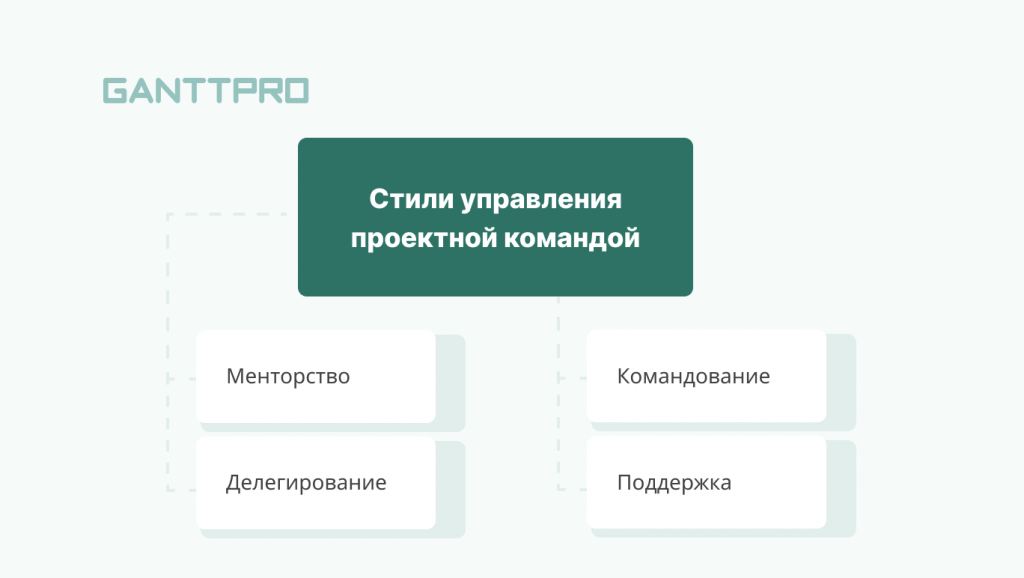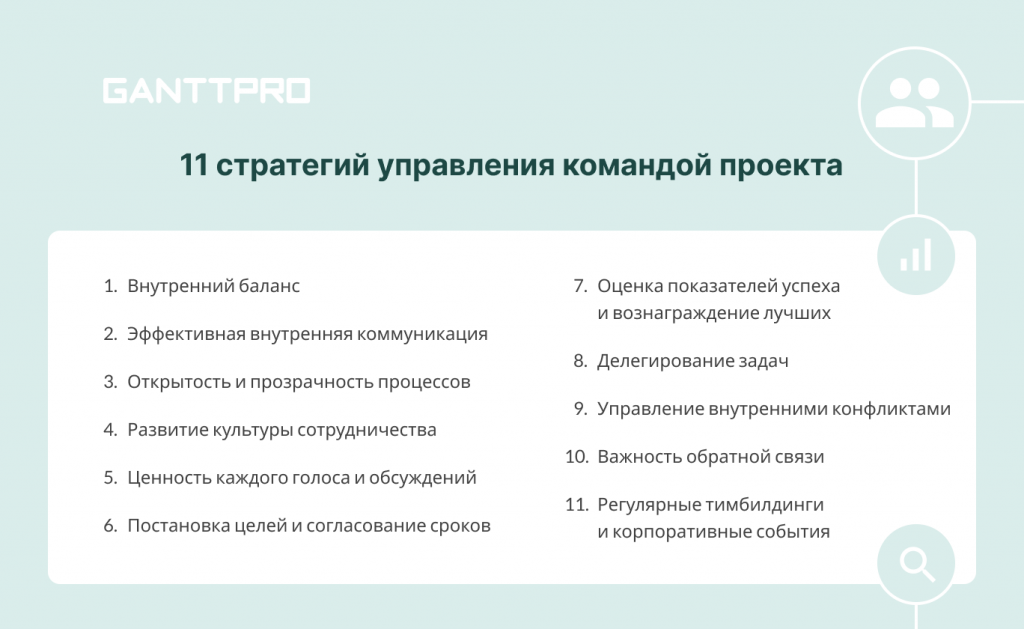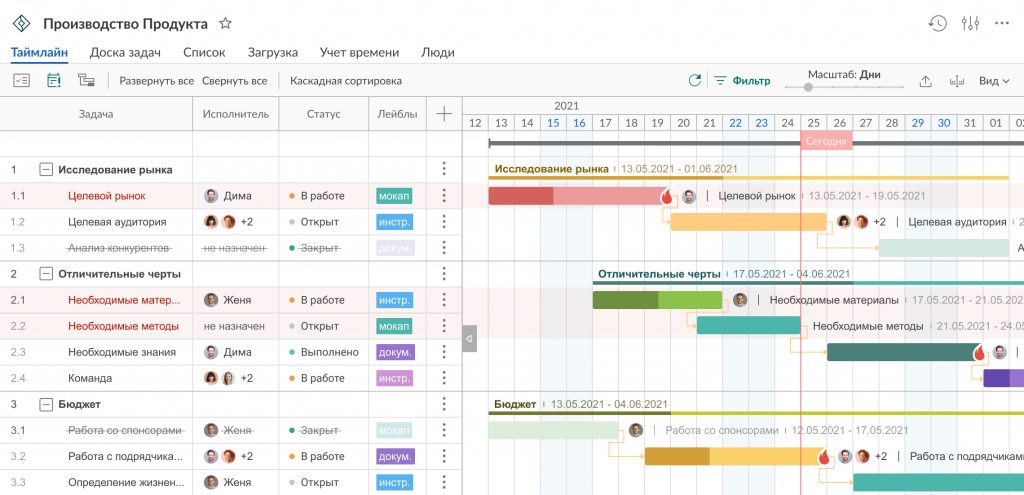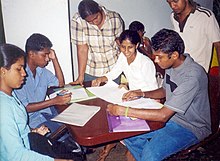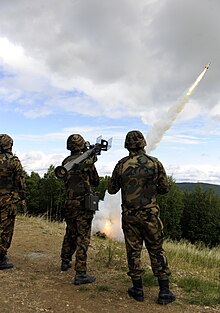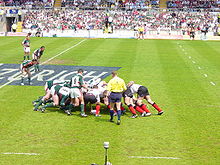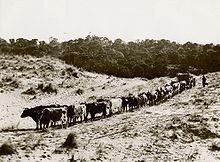Команда -инструкция
- Команда -инструкция
-
13. Команда -инструкция
E. Instruction command; Standard command
F. Commande d’instruction
Команда телеуправления, передаваемая с пункта управления на контролируемые пункты оперативному персоналу, где она выводится на устройства отображения в виде стандартных инструкций.
Примечание. Команда-инструкция отличается от сообщений, передаваемых обычными устройствами связи, тем, что она передается устройствами телемеханики аналогично командам других типов
Словарь-справочник терминов нормативно-технической документации.
.
2015.
Смотреть что такое «Команда -инструкция» в других словарях:
-
команда-инструкция — Команда телеуправления, передаваемая с пункта управления на контролируемые пункты оперативному персоналу, где она выводится на устройства отображения в виде стандартных инструкций. Примечание Команда инструкция отличается от сообщений,… … Справочник технического переводчика
-
команда — 2.1 команда: Электрический сигнал, несущий сообщение, передаваемое с КДП и предназначенное для управления радиотехническими средствами УВД и ближней навигации. Источник … Словарь-справочник терминов нормативно-технической документации
-
инструкция — (Instruction) При программном описании контура знаков в формате TrueType [формат цифровых шрифтов] – команда низшего уровня, позволяющая модифицировать контур знака или другие данные в зависимости от разрешения [размер выводного устройства,… … Шрифтовая терминология
-
инструкция — команда; отрасл. приказ; инструкция Машинное слово, предназначенное для управления работой вычислительной машины … Политехнический терминологический толковый словарь
-
Команда (в ЦВМ) — Команда в ЦВМ, специальный код (инструкция, записанная на языке машины), определяющий действия ЦВМ при выполнении отдельной операции или части вычислительного процесса. В общем случае К. содержит сведения о том, какие операции следует произвести … Большая советская энциклопедия
-
команда — команда; отрасл. приказ; инструкция Машинное слово, предназначенное для управления работой вычислительной машины … Политехнический терминологический толковый словарь
-
Инструкция (информатика) — У этого термина существуют и другие значения, см. Инструкция. В информатике термин инструкция обозначает одну отдельную операцию процессора, определённую системой команд. В более широком понимании, «инструкцией» может быть любое представление… … Википедия
-
Команда — В Викисловаре есть статья «команда» Команда (слово заимствовано в конце XVII века из исп. и португ. comando «командование, управление», исп. commando «командо … Википедия
-
Команда — I Команда (франц. commande, от позднелат. commando поручаю, приказываю) 1) временная или постоянная воинская организация численностью от 3 человек и более, предназначенная для выполнения определённых обязанностей по службе или каких либо… … Большая советская энциклопедия
-
пустая инструкция — холостая команда — [Е.С.Алексеев, А.А.Мячев. Англо русский толковый словарь по системотехнике ЭВМ. Москва 1993] Тематики информационные технологии в целом Синонимы холостая команда EN no operationNO OPNOP … Справочник технического переводчика
команда
- команда
-
- команда
-
См. главенство, общество, первенство
быть под командой, по команде…
- команда
-
бригада, отряд, экипаж; распоряжение, приказ(ание), повеление, директива; главенство, общество, первенство; майна, сигнал, братия, банда, личный состав, теплая компания, начальствование, аут, одиннадцать надежд, великолепная пятерка и вратарь, марш, группешник, ледовая дружина, сборная, аппорт, зондеркоманда, братва, апорт, ансамбль, компания, лидер, командочка, предводительство, предписание, тубо, коллектив, сборники, подразделение, группа, приказание, наказ, состав, начальство
Словарь русских синонимов и сходных по смыслу выражений.- под. ред. Н. Абрамова, М.: Русские словари,
1999.Словарь русских синонимов.
- команда
Словарь синонимов русского языка. Практический справочник. — М.: Русский язык.
.
2011.
- команда
-
сущ.
• распоряжение
• приказание
• приказ
• веление
• повеление
Словарь русских синонимов. Контекст 5.0 — Информатик.
2012.
- команда
-
сущ.
, кол-во синонимов: 163
Словарь синонимов ASIS.
В.Н. Тришин.
2013.
.
Синонимы:
Полезное
Смотреть что такое «команда» в других словарях:
-
команда́рм — командарм … Русское словесное ударение
-
КОМАНДА — (фр., от лат. commendare поручать). 1) небольшой отряд войска. 2) приказание начальствующего. 3) начальствование. Словарь иностранных слов, вошедших в состав русского языка. Чудинов А.Н., 1910. КОМАНДА 1) военные отряд под начальством отдельного… … Словарь иностранных слов русского языка
-
КОМАНДА — КОМАНДА, команды, жен. (франц. commande). 1. Словесный краткий приказ по установленной форме (воен.). Слова команды едва были слышны. Раздалась команда. Работать по команде. Слушаться команды. 2. перен. Принуждение, проявление прихоти, каприза… … Толковый словарь Ушакова
-
Команда а — Команда «А» The A Team Жанр комедия, приключения, драма, боевик Автор идеи Стефен Дж. Кэннел Фрэнк Люпо В главных ролях Джордж Пеппард … Википедия
-
КОМАНДА — (Ship s company, crew, ship s people) 1. Экипаж корабля, исключая средний и вышестоящий начальствующий состав. 2. Организационная единица служб корабля. См. Отделение. Самойлов К. И. Морской словарь. М. Л.: Государственное Военно морское… … Морской словарь
-
Команда «33» — Команда «33» … Википедия
-
КОМАНДА — группа Людей, призванная выполнять определенную работу, задание. Обычно команда работает на лидера, который ставит задачу и распределяет работу между ее членами. Райзберг Б.А., Лозовский Л.Ш., Стародубцева Е.Б.. Современный экономический словарь … Экономический словарь
-
Команда — А. Временная или постоянная группа людей, нацеленная на выполнение определенной работы, задания. Б. Приказ на выполнение каких либо действий. Словарь бизнес терминов. Академик.ру. 2001 … Словарь бизнес-терминов
-
КОМАНДА — (франц. commande) 1) устное приказание командира (начальника) в краткой форме, определенной воинскими уставами.2) Воинская организация от 3 человек и более для выполнения определенных обязанностей по службе или каких либо работ.3) Спортивный… … Большой Энциклопедический словарь
-
Команда — это тщательно сформированный, хорошо управляемый, самоорганизующийся коллектив, быстро и эффективно реагирующий на любые изменения рыночной ситуации, решающий все задачи как единое целое … Словарь терминов антикризисного управления
Аудиоверсия:
Управление командой — важный навык для любого руководителя проекта. В эту задачу входят расширение возможностей группы, вдохновение, демонстрация эффективного лидерства, урегулирование конфликтов и многое другое.
Когда команда проекта может похвастаться эффективным управлением, потенциал каждого ее отдельного сотрудника растет.
Управлять людьми бывает очень сложно, но сноровка приходит с опытом. Согласно опросу, 54% сотрудников столкнулись с эмоциональным выгоранием по разным причинам во втором квартале 2022 года. Качество управления группой — один из факторов, влияющих на это.
В этом материале мы продолжаем изучать команды проекта, но, на этот раз, делаем акцент на грамотном управлении. Ведь без него даже самые талантливые сотрудники не смогут прийти к успеху.
Давайте разбираться в особенностях успешного менеджмента, стратегиях, управленческих стилях и подводных камнях.
Содержание:
- Что такое управление командой проекта.
- Преимущества управления командой проекта.
- Стили управления проектной командой.
- Пример управления командой проекта.
- Какие есть стратегии управления.
- Как выбрать инструмент для управления командой проекта.
Что такое управление командой проекта?
Управление командой проекта — это способность менеджера или организации координировать действия группы людей, связанной одним проектом для выполнения стратегических задач.
Управление командой включает в себя корпоративную коммуникацию, постановку целей и задач, оценку деятельности каждого отдельного сотрудника, контроль и регулировку назначений и расписаний, рабочей загрузки и многого другого. Это также про способность выявлять проблемы, разрешать конфликты внутри группы и положительно влиять на ее продуктивность.
Представьте муравейник. Муравьи по своей общей биомассе сравнимы с людьми. Несмотря на кажущийся хаос и внесистемность в их рядах, каждый член этого уникального коллектива понимает свою роль и ответственность.
У них нет централизованного контроля, понятной им стратегии по добыванию пищи или, тем более, системы управления рисками. Однако их работа «кипит», а результаты поражают.
В человеческом коллективе все немного иначе. Проект без качественного управления обречен на крах. Но, чтобы не быть голословными, сразу вспомним пример удачного управления командой проекта.
Этот пример — проект Википедия. Уникальной интернет-библиотекой пользуется уже давно.
Этот коллективный двигатель знаний — результат труда армии писателей и редакторов. А ведь их работа никогда бы не превратилась в такой уникальный продукт без правильного управления.
Несмотря на масштаб, Википедия до сих пор работает без серьезных сбоев. Более того, в случае электронной библиотеки, командная работа — это вклад каждого, кто хоть когда-либо заходил на сайт. Значит, каждый из нас — часть этой огромной команды.
Однако вернемся к управлению командой проекта и его роли.
Почему важно управлять командой проекта?
Команда — это двигатель проекта. Ее участники выполняют все необходимые задачи в соответствии с планом. Вовремя и в рамках бюджета. Это красиво на словах, но на деле требует тщательной координации и администрирования.
Главный смысл управления коллективом — успешная реализация проекта. Но есть и другие достоинства, которые могут быть не столь очевидны.
Продуктивность
Правильное управление людьми помогает проекту, мотивируя их работать лучше. Дело в балансировании их рабочей нагрузки, создании реалистичных сроков, поддержке и устранении препятствий, мешающих им преуспеть в выполнении своих задач.
Обучение
Чем больше у команды совместного опыта ее отдельных представителей, тем лучше эта группа будет работать. А чем меньше новых участников группы, тем меньше будет кривая обучения, и более опытные участники быстрее помогут адаптироваться.
По мере того, как команда проекта приобретает опыт и навыки, она становятся более ценным активом.
Моральный дух
Оптимизация морального духа работников может показаться не таким значительным элементом, который зависит от управления. Однако счастливые команды проще удерживать. У них снижен отток кадров, что экономит деньги.
Производительность
Правильное управление командой создает сильную корпоративную основу. Мотивированные сотрудники достигают крупных целей всей организации, работая над более мелкими задачами отдельных проектов.
Сплоченность
Команды работают лучше, когда они работают вместе. Менеджеры должны всегда поощрять сотрудничество, которое объединит всех сотрудников в эффективный коллектив.
Но все ли менеджеры одинаковы в своих принципах и методах управления? Конечно же, нет. Существуют разные стили управления командами проектов, и сейчас самое время рассказать о них.
Стили управления проектной командой
Стиль управления командой проекта — это модель взаимодействия со всеми ее участниками, которая определяет поведение лидера группы, способы принятия решения и умение эффективно распределять задачи.
Даже если руководители не задумываются о том, к какому стилю относится их управленческая модель, у них все равно есть устоявшиеся рамки поведения.
Каждая модель известна своими плюсами и минусами. Главное — уметь адаптировать свой стиль управления под каждого отдельного сотрудника и текущую ситуацию.
Есть несколько классификаций стилей управления командами. Это зависит от того, какой критерий был взят за основу. Ниже — примеры моделей, которые можно применить в большинстве случаев.
Командование
Это известный способ управления участниками проекта, основанный на простом распределении задач.
Задача менеджера, который применяет такой стиль управления — донести до подчиненных что, как и когда им нужно делать. Эта модель вряд ли предполагает творчество и вдохновляющие идеи, но она удачно подходит для работы с фрилансерами или подрядчиками.
«Командование» ведет к конкретному результату. Но у менеджера на все не хватает времени, поэтому приходится поручать работу другим. Не трудно догадаться, что такой управленческий стиль вряд ли поможет выстроить корпоративную культуру.
Пример управленческого решения
«По моей инициативе мы запускаем новый продукт. Для успешного запуска, вам необходимо сделать следующее…»
Менторство
Эта модель управления командой проекта предполагает активную коммуникацию со всеми участниками и помощь в любых их начинаниях. Лучше всего придерживаться этого стиля, когда есть цель мотивировать и вдохновить сотрудников.
«Менторство» удачно подходит для построения работы с новым брендом. Важно не только добиться, чтобы разработчики, дизайнеры, тестировщики и маркетологи работали слаженно, но и мотивировать их на достижение лучших результатов.
При таком подходе к процессам управления менеджеру важно постоянно объяснять команде, почему принимается то или иное решение. Каждый должен получать как можно больше информации и понимания того, что все действуют в общих интересах.
«Менторство» часто выбирают руководители, которые возглавляют проектные команды со штатными сотрудниками.
Пример управленческого решения
«По моей инициативе мы запускаем новый продукт. Почему это важно? Сейчас я подробно расскажу, как вы можете помочь подготовить его к релизу.»
Поддержка
Такой стиль управления командой проекта предполагает как можно меньше инструкций, зато обеспечивает группу постоянной поддержкой.
Менеджеру проекта, работающему по такой модели, очень важно выслушать и «впитать» все идеи и предложения команды до принятия того или иного решения. Каждый член группы чувствует себя свободно и раскованно, предлагает идеи и не боится обсуждений.
Этот управленческий стиль подходит для больших проектных команд, где много менеджеров, лидов и начальников отделов.
Пример управленческого решения
«Как вы знаете, мы запускаем новый продукт. Прошу вас подготовить варианты стратегии запуска. После ознакомления, я смогу принять окончательное решение.»
Делегирование
«Делегирование» означает минимум заданий и минимум поддержки со стороны управленца. Эта модель подойдет только в том случае, когда сотрудники обеспечили полный кредит доверия, а менеджер уверен в конкретном человеке, который будет принимать окончательное решение.
Такой стиль управления командой проекта не всегда приносит хорошие результаты. Однако с него всегда можно переключиться на модель, предполагающую более тесное сотрудничество с коллегами.
«Делегирование» выбирают, если в команде есть топ менеджмент, заместители и руководители отделов.
Пример управленческого решения
«Нам нужно запустить новый продукт. И именно от вас зависит, как пройдет этот запуск.»
Управление командой проекта на примере IT стартапа
Любой стартап начинается с «горящих глаз» нескольких энтузиастов. Со временем их количество в команде будет расти, а значит, стиль управления ресурсами и проектной группой будет тоже меняться.
Например, в стартапе из 7 человек, скорее всего, будет всего один руководитель. Это значит, что основой руководства командой будут выбраны «Поддержка» или «Менторство».
Если же в небольшом коллективе есть соучредитель, то ему, вероятно, будут переданы какие-то обязанности. Например, финансовые вопросы и продажи. В таком случае, можно придерживаться стиля «Поддержка», но в некоторых ситуациях переходить на «Командование» и «Делегирование».
Помните, что неправильно выбранный стиль управления командой проекта может привести к печальным последствиям:
- Нарушить психологический баланс в коллективе.
- Замедлить поток креативных идей.
- Нарушить способность действовать как единое целое в трудную минуту.
- Спровоцировать текучку кадров.
Любой стиль управления подразумевает лучшие практики или стратегии, приносящие быстрый успех.
11 стратегий управления командой проекта
Чтобы глубже понять, в чем успех управления командой проекта, рассмотрим различные стратегии, которые призваны помочь менеджерам стать более эффективными и результативными.
1. Внутренний баланс
Все больше компаний задумываются об оптимизации процесса найма, ведь выбор лучших специалистов для работы влияет на успех проекта.
При выборе членов проектной команды, важно убедиться, что их технические навыки и soft skills совместимы с требованиями проекта. Найти идеальный баланс в подборе специалистов и раскрытии их качеств — важный талант менеджера.
2. Эффективная коммуникация внутри команды
Ни в одной эффективной команде сотрудник не остается один на один с целым проектом. В коллективе важно полагаться на множество внутренних и внешних субъектов, которые могут повлиять на общий успех.
Менеджеры проекта должны регулярно поддерживать вовлеченность сотрудников на протяжении всего жизненного цикла проекта. Единственный способ добиться этого — стимулировать качество коммуникации внутри команды.
Коммуникация — ключ к эффективному управлению в любой профессиональной среде. Самая частая причина неэффективной коммуникации — неумение слушать.
Проектные команды должны четко знать и транслировать цели проекта, а также понимать роль и интерес каждого коллеги.
Еще одно преимущество качественного общения — возможность предупредить или контролировать риски. Когда ваш коллега делится своими сложностями в управлении проектом, вы можете использовать эту информацию для упреждающего реагирования на риск.
3. Открытость и прозрачность процессов
Обмен данными не всегда контролируется лидами. Однако очень важно обеспечить прозрачность всех процессов и внутренних данных проекта для всех членов группы.
Открытость и прозрачность помогут извлечь максимальную пользу из набора навыков каждого участника, улучшить внутреннюю подотчетность, контролировать прогресс и добиваться больших успехов всем вместе.
4. Развитие культуры сотрудничества
Культура сотрудничества — это про то, как все делать правильно для развития и функционирования вашей команды. Все должны быть готовы в любой момент обсудить проблемы, с которыми они сталкиваются при выполнении поставленных задач.
Здесь не обойтись без качественного онлайн инструмента для совместной работы над проектами. Такой софт поможет организовать виртуальные беседы, назначать и обсуждать задачи, делегировать и, в целом, вовлекать всех в обсуждения
5. Ценность каждого голоса и обсуждений
Очень часто лучшие идеи рождаются в процессе коллективного обсуждения. Обсуждение стимулирует изобретательность и инновационные подходы. Они важны для оптимизации всех процессов в проекте и повышения общей производительности.
Отличная идея может прийти от кого угодно, независимо от занимаемой должности. К примеру, в философии Agilе созданию культуры уважения, в которой каждый получает возможность принять участие, отводится очень важная роль.
Задача лидера группы — рассматривать идеи всех заинтересованных сторон. Даже если идея сразу не понятна, важно объяснить свои сомнения и поощрять членов вашей команды продолжать активно участвовать и вносить свои идеи в общий план проекта.
6. Постановка целей и согласование сроков
Управление временем, безусловно, влияет на управление командой и коммуникации проекта в целом.
Менеджеры проектов прикрепляют конкретные сроки к роли каждого участника в проекте и связывают их с еженедельными целями. Соблюдение таймлайнов позволяет им отслеживать свою производительность и активность, учитывая жизненный цикл проекта.
В этом деле не обойтись без инструментов визуализации, таких как диаграмма Ганта, которые позволят назначать и отслеживать срок выполнения каждой созданной задачи и проекта. Такими диаграммами можно делиться со всеми коллегами онлайн
Важно помнить о согласовании вашей цели с целями команды. В противном случае, ваши коллеги могут пойти в противоположные стороны.
7. Оценка показателей успеха и вознаграждение лучших
Отсутствие здоровой конкуренции и слабая система вознаграждений могут притормозить рост и снизить интерес команды.
Продуманная система вознаграждения поможет своевременно оценивать сотрудников, которые добиваются хороших результатов.
8. Делегирование задач
Любой участник проектной команды однажды может стать лидером. Задача менеджера, в том числе, состоит в том, чтобы раскрывать лидерские качества сотрудников. Это требует определенной степени доверия и свободы действий в рамках своей роли.
Делегирование задач также помогает в становлении хорошего лидера. Помните, что постоянный микроменеджмент самых маленьких задач мешает сосредоточиться на более широкой картине и поиске эффективного способа выполнения поставленных задач.
9. Управление внутренними конфликтами
Любая команда — это не просто работники, а личности. Там, где есть личности, всегда есть место конфликту.
Менеджеру важно вовремя «потушить пламя» и эффективно урегулировать ситуацию, не принимая чью-то сторону и не теряя объективность. Если нужно, лучше взять паузу и хорошо все обдумать, прежде чем реагировать.
Если конфликт связан с профессиональным вопросом, напомните всем об общей цели и сдерживайте ситуацию. Если же это личностный конфликт, постарайтесь побудить вовлеченных сотрудников уладить отношения как можно более дружелюбно.
10. Важность обратной связи
Точно так же, как обратная связь от клиентов помогает улучшить ваш продукт или сервис, так и отзывы со сторон коллег вашей проектной группы помогут улучшить стиль руководства.
«Оттачивайте» навыки лидерства и настраивайте их в соответствии с личными качествами вашей команды.
11. Регулярные тимбилдинги и корпоративные события
Любые важные вехи проекта должны стать запоминающейся датой в команде. Это может быть простейшая внутренняя коммуникация в виде корпоративной имейл рассылки или глобальный корпоратив, к которому вы будете готовиться полгода.
Даже неформальные тимбилдинг игры мотивируют членов команды работать лучше в будущем. С их помощью вы укрепите связь с коллегами на личном уровне и заставите их почувствовать себя ценными, что положительно повлияет на их работу.
Важность выбора инструмента для управления командой проекта
Новейшие технологии помогают грамотно реализовать все подходы и стратегии. Легко и без специальной подготовки.
Любому менеджеру сегодня доступны уникальные ресурсы и кроссплатформенные онлайн инструменты с удобными функциями для менеджмента команд.
Такие инструменты как GanttPRO предлагают все необходимые «рычаги» для качественного управления проектными командами, даже в условиях работы удаленно или с фрилансерами.
Онлайн диаграмма Ганта визуализирует все проекты и задачи ваших коллег, делая их видимыми каждому. Удобный интерфейс и множество возможностей делают платформу лучшим другом любой команды от строительной бригады до инновационного стартапа.
Бесплатная регистрация поможет вам освоить надежный инструмент для управления проектами и командами, не откладывая это в долгий ящик.

Диаграмма Ганта для качественного управления
Управляйте проектами и командами с помощью онлайн диаграммы Ганта.
Попробуйте бесплатно
Чего следует избегать в управлении командой проекта?
Неопытные менеджеры проектов могут совершать ряд типичных ошибок. Вот чего стоит остерегаться:
- Попытки всегда и во всем справиться самостоятельно без регулярного консультирования с руководством.
- Вовлечения в проблему высшего руководства без обдумывания способов ее решения.
- Попытки навредить команде или руководству.
- Неспособности коммуницировать с клиентами о том, чего они хотят от команды.
- Неправильного использования своих полномочий. Важно всегда понимать что все, что вы просите людей сделать, отвечает интересам компании.
Многие из этих моментов кажутся очевидными, однако очень легко сделать эти ошибки в суете повседневной управленческой жизни.
Заключение
Успех проекта зависит от разных факторов, включая управление командой проекта. Поэтому этот вопрос следует прорабатывать так же тщательно, как остальные.
Роль руководителя проекта предполагает меньше думать о своих потребностях и больше о потребностях команды. Мы надеемся, что перечисленные выше стили менеджмента и управленческие стратегии помогут привести вас к успеху, миновав преграды и подводные камни.
Бонус: ТОП-5 книг по управлению командами
1. Эффект муравейника. Успешная работа команды и коллективный разум
Автор книги: Стивен Джойс.
Год: 2010.

2. Корпорация гениев. Как управлять командой творческих людей
Авторы книги: Эд Кэтмелл, Эми Уоллес.
Год: 2014.
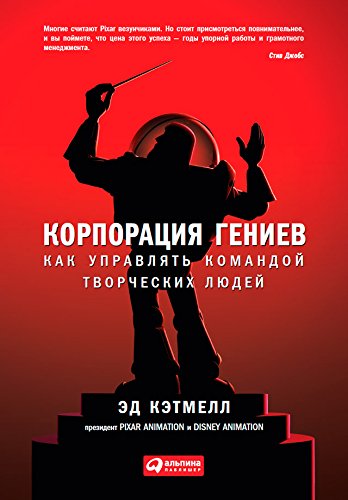
3. Эффект ореола и другие заблуждения каждого менеджера
Автор книги: Фил Розенцвейг.
Год: 2007.

4. Agile-менеджмент. Лидерство и управление командами
Автор книги: Юрген Аппело.
Год: 2018.

5. Без офиса. Как создать команду энерджайзеров в тапках
Автор книги: Павел Сивожелезов.
Год: 2020.

5
3
голоса
Рейтинг статьи
This content is licensed by
A team is a group of individuals (human or non-human) working together to achieve their goal.
As defined by Professor Leigh Thompson of the Kellogg School of Management, «[a] team is a group of people who are interdependent with respect to information, resources, knowledge and skills and who seek to combine their efforts to achieve a common goal».[1]
A group does not necessarily constitute a team. Teams normally have members with complementary skills[2]
and generate synergy[3]
through a coordinated effort which allows each member to maximize their strengths and minimize their weaknesses. Naresh Jain (2009) claims:
Team members need to learn how to help one another, help other team members realize their true potential, and create an environment that allows everyone to go beyond their limitations.[4]
While academic research on teams and teamwork has grown consistently and has shown a sharp increase over the past recent 40 years, the societal diffusion of teams and teamwork actually followed a volatile trend in the 20th century.[5] The concept was introduced into business in the late 20th century, which was followed by a popularization of the concept of constructing teams. Differing opinions exist on the efficacy of this new management fad.[6]
Some see «team» as a four-letter word: overused and under-useful.[7]
Others see it as a panacea that realizes the Human Relations Movement’s desire to integrate what that movement perceives as best for workers and as best for managers.[8]
Many people believe in the effectiveness of teams, but also see them as dangerous because of the potential for exploiting workers — in that team effectiveness can rely on peer pressure and peer surveillance.[9]
However, Hackman sees team effectiveness not only in terms of performance: a truly effective team will contribute to the personal well-being and adaptive growth of its members.[10]
English-speakers commonly use the word «team» in today’s society to characterise many types of groups. Peter Guy Northouse’s book Leadership: theory and practice[11]
discusses teams from a leadership perspective. According to the team approach to leadership, a team is a type of organizational group of people that are members.[citation needed] A team is composed of members who are dependent on each other, work towards interchangeable achievements, and share common attainments. A team works as a whole together to achieve certain things. A team is usually located in the same setting as it is normally connected to a kind of organization, company, or community. Teams can meet in-person (directly face-to-face) or virtually when practicing their values and activities or duties. A team’s communication is significantly important to their relationship.[citation needed] Ergo, communication is frequent and persistent, and as well are the meetings.[citation needed] The definition of team as an organizational group is not completely set in stone, as organizations have confronted a myriad[quantify] of new forms of contemporary collaboration. Teams usually have strong organizational structured platforms and respond quickly and efficiently to challenges as they have skills and the capability to do so.[citation needed] An effective organizational team leads to greater productivity, more effective implementation of resources, better decisions and problem-solving, better-quality products/service, and greater innovation and originality.[citation needed]
Alongside the concept of a team, compare the more structured/skilled concept of a crew, the advantages of formal and informal partnerships, or the well-defined – but time-limited – existence of task forces.
A team becomes more than just a collection of people when a strong sense of mutual commitment creates synergy, thus generating performance greater than the sum of the performance of its individual members.[12]
Thus teams of game players can form (and re-form) to practise their craft/sport. Transport logistics executives can select teams of horses, dogs, or oxen for the purpose of conveying passengers or goods.
Types[edit]
Of particular importance is the concept of different types of teams.[citation needed]
Categories by subject[edit]
Although the concept of a team is relatively simple, social scientists have identified many different types of teams. In general, teams either act as information processors, or take on a more active role in the task and actually perform activities. Common categories and subtypes of teams include:
Action teams[edit]
An action team is a group of people with leadership skills. It devises strategies, analyze situations and execute needed actions.
Advisory teams[edit]
Advisory teams make suggestions about a final product (Devine, 2002). For instance, a quality-control group on an assembly line would be an example of an advisory team: they may examine the products produced and make suggestions about how to improve the quality of the items being made. A product reaches the final stage and is put for sales after getting approved by the advisory teams. The advisory team consists of experts who possess extraordinary skills.
Command team[edit]
The goal of the command team is to combine instructions and to coordinate action among management. In other words, command teams serve as the «middle man» in tasks (Devine, 2002). For instance, messengers on a construction site, conveying instructions from the executive team to the builders, would be an example of a command team.[clarification needed]
Executive team[edit]
An executive team is a management team that draws up plans for activities and then directs these activities (Devine, 2002). An example of an executive team would be a construction team designing blueprints for a new building, and then guiding the construction of the building using these blueprints.
Project teams[edit]
A team used only for a defined period of time and for a separate, concretely definable purpose, often[quantify] becomes known as a project team. This category of team includes negotiation-, commission- and design-team subtypes. In general, these types of teams are multi-talented and composed of individuals with expertise in many different areas. Members of these teams might belong to different groups, but receive assignment to activities for the same project, thereby allowing outsiders to view them as a single unit. In this way, setting up a team allegedly facilitates the creation, tracking and assignment of a group of people based on the project in hand.[citation needed] The use of the «team» label in this instance often has no relationship to whether the employees work as a team.
Lundin and Soderholm define project teams as a special case in the more general category of temporary organizations which also includes task forces, program committees, and action groups. All of these are formed to «make things happen«. This emphasis on action leads to a demarcation between the temporary organization and its environment. The demarcation is driven by four interrelated concepts (the four T’s):
- Time – the time horizons and limits are crucial to the existence of temporary organizations «whose very existence helps spread a sense of urgency«.
- Task – the raison d` ètre for the temporary organization; no other party is attending to the same task at the same time in the same way
- Team – provides the human resources to accomplish the task in the time available
- Transition – an accomplishment or some sort of qualitative difference is expected after the time horizon
«The concepts also differ from the crucial concepts that define the permanent organization. Permanent organizations are more naturally defined by goals (rather than tasks), survival (rather than time), working organization (rather than team) and production processes and continual development (rather than transition)»
[13]
Sports teams[edit]
A sports team is a group of people which play sports (often team sports) together. Members include all players (even those who are waiting their turn to play), as well as support members such as a team manager or coach.
Virtual teams[edit]
Developments in information and communications technology have seen the emergence of the virtual work-team. A virtual team is a group of people who work interdependently and with shared purpose across space, time, and organisational boundaries using technology to communicate and collaborate. Virtual team members can be located across a country or across the world, rarely meet face-to-face, and include members from different cultures.[14]
In their 2009 literature-review paper, Ale Ebrahim, N., Ahmed, S. and Taha, Z. added two key issues to definition of a virtual team: «as small temporary groups of geographically, organizationally and/ or time dispersed knowledge workers who coordinate their work predominantly with electronic information and communication technologies in order to accomplish one or more organization tasks».[15] Many virtual teams are solving customer problems or generating new work processes.
Work teams[edit]
Work teams are responsible for the actual act of creating tangible products and services (Devine, 2002). The actual workers on an assembly line would be an example of a production team, whereas waiters and waitresses at a diner would be an example of a service team.
Interdependent and independent[edit]
One common distinction is drawn between interdependent and independent teams.[16] The difference is determined by the actions that the team members take while working.
Interdependent teams[edit]
A rugby team provides a clear example of an interdependent team:
- no significant task can be accomplished without the help and cooperation of every member;
- within their team members typically specialize in different tasks (r.r the ball, goal kicking and scrum feeding), and
- the success of every individual is inextricably bound to the success of the whole team. No rugby player, no matter how talented, has ever won a game by playing alone.
Independent teams[edit]
On the other hand, a track-and-field team is a classic example of an independent team:[17]
- races are run, or points are scored, by individuals or by partners
- every person in a given job performs basically the same actions
- how one player performs has no direct effect on the performance of the next player
If all team members each perform the same basic tasks, such as students working problems in a maths class, or outside sales employees making phone calls, then it is likely that this team is an independent team. They may be able to help each other—perhaps by offering advice or practice time, by providing moral support, or by helping in the background during a busy time—but each individual’s success is primarily due to each individual’s own efforts. Runners do not win their own races merely because the rest of their teammates did, and maths students do not pass tests merely because their neighbours know how to solve equations.
In the business environment, sales teams and traditional professionals (such as doctors, lawyers, and teachers), work in independent teams.[16] Most teams in a business setting are independent teams.[16]
Coaching differences between interdependent and independent teams[edit]
Coaching an interdependent team like a football team necessarily requires a different approach from coaching an independent team like a gymnastics team, because the costs and benefits to individual team members—and therefore the intrinsic incentives for positive team behaviors—differ markedly. An interdependent team benefits from members getting to know the other team members socially, from developing trust in each other, and from conquering artificial collective challenges (such as those offered in outdoors ropes courses)[citation needed]. Interdependent teams respond well to collective rewards, and independent teams perform better with individual rewards.[18]
Hybrid teams and hybrid rewards, which try to combine characteristics of both, are sometimes created in the hope of getting the best of both types. However, instead, they tend instead to produce the negative features of each and none of the benefits, and consequently under-perform.[18][need quotation to verify]
Pressuring teams to become independent or interdependent, on the grounds that management has decided that one type is intrinsically better than the other, results in failure.[17] The nature of the team is defined by the type of work that is done, and not by management’s wishes or by the fashions of the latest management fad.
Multidisciplinary and interdisciplinary[edit]
Teams in areas of work or study such as in the medical field, may be multidisciplinary or interdisciplinary.[19]
Multidisciplinary teams involve several professionals who independently treat various issues a patient may have, focusing on the issues in which they specialise. The problems that are being treated may or may not relate to other issues being addressed by individual team members.
The interdisciplinary team approach involves all members of the team working together towards the same goal. In an interdisciplinary team approach, members of the core team will often rôle-blend, taking on tasks usually filled by people in different roles on the team.[19]
Self-directing or self-designing teams[edit]
These types of teams result in the highest potential for innovative work and motivation among its members. Team members determine the team’s objectives and the means to achieve them. The management’s only responsibility among self-directing teams is the creating the team’s organizational context.[20] Self-directed teams offer the most potential for innovation, enhance goal commitment and motivation, and provide opportunity for organizational learning and change.[20]
Team size, composition, and formation[edit]
Team size and team composition affect team processes and team outcomes. The optimal size (and composition) of teams is debated[21] and will vary depending on the task at hand. At least one study of problem-solving in groups showed an optimal size of groups at four members. Other works estimate the optimal size between 5–12 members or a number of members that can consume two pizzas.[21][22] The following extract is taken from Chong (2007):[23]
- The interest in teams gained momentum in the 1980s with the publication of Belbin’s (1981)[24] work on successful teams. The research into teams and teamwork followed two lines of inquiry. Writers such as Belbin (1981, 1993),[24][25] Woodcock (1989),[26] Margerison and McCann (1990),[27] Davis et al. (1992),[28] Parker (1990),[29] and Spencer and Pruss (1992)[30] focused on team roles and how these affected team performance. These studies suggested that team performance was a function of the number and type of roles team members played. The number of roles for optimal performance varied from 15 (Davis et al., 1992)[28] to four (Parker, 1990).[29] This variation has been attributed to how roles were defined. Lindgren (1997)[31] believed that, in a social psychological sense, ‘roles’ were behaviours one exhibited within the constraints assigned by the outside world to one’s occupational position e.g. leader, manager, supervisor, worker etc. Personality traits, on the other hand, were internally driven and relatively stable over time and across situations. These traits affected behavioural patterns in predictable ways (Pervin, 1989)[32] and, in varying degrees, become part of the ‘role’ definition as well.
- The other line of inquiry focused on measuring the ‘effectiveness’ of teams. Writers such as Deihl and Stroebe (1987),[33] Gersik (1988),[34] Evenden and Anderson (1992),[35] Furnham et al. (1993),[36] Cohen and Ledford (1994)[37] and Katzenbach (1998)[38] were concerned with high performing teams and the objective measurement of their effectiveness. McFadzean (2002)[39] believed that the appearance of a number of models of team effectiveness was indicative of a variety of variables such as personality, group size, work norms, status relationships, group structure etc. that can impact on team ‘effectiveness’ and its measurement.
David Cooperrider suggests that the larger the group, the better. This is because a larger group is able to address concerns of the whole system. So while a large team may be ineffective at performing a given task, Cooperider says that the relevance of that task should be considered, because determining whether the team is effective first requires identifying what needs to be accomplished.
Regarding composition, all teams will have an element of homogeneity and heterogeneity. The more homogeneous the group, the more cohesive it will be. The more heterogeneous the group, the greater the differences in perspective and increased potential for creativity, but also the greater potential for conflict.
Team members normally have different roles, like team leader and agents. Large teams can divide into subteams according to need.
Many teams go through a life-cycle of stages, identified by Bruce Tuckman as: forming, storming, norming, performing and adjourning.
Team cognition[edit]
Team cognition has been defined as an «emergent state that refers to the manner in which knowledge important to team functioning is organized, represented, and distributed within team.»[40] This emergent state can manifest in two ways. Compositional emergence occurs when individual level cognition is similar in form and function to its manifestation at team-level. Compilational emergence, on the other hand, represents a greater degree of synergy among team members and represents a new-team level construct. As such, higher degrees of compilational emergence are more closely related to team process and performance than is compositional emergence.
Research into team cognition has focused on how teams develop mental models and transactive memory systems. Mental models refer to the degree in which team members have similar cognitive understanding of the situation and performance goals which include shared representations of the task. Transactive memory systems relate to how knowledge is distributed among team members and retrieved in a coordinated fashion, the way that team member rely on knowledge that is possessed by other members and how knowledge sets are differentiated within a team. The emergence of team cognition is thought to impact team effectiveness because it can positively affect a team’s behavioural process, motivational states, and performance.
Team cognition consists of two broad types of content. Task related models are related to knowledge of the major duties and resources possessed by the team. Team-related models refer to interactions and interdependence among the team members.
Team effectiveness[edit]
When companies are in trouble, they often restructure into teams. However, putting people into teams does not solve problems; if not done thoughtfully, this may even cause more problems.[20] The formation of teams is most appropriate for tasks that are difficult, complex and important. These types of tasks are often beyond the skills and abilities of any single individual. However, the formation of a team to complete such tasks does not guarantee success. Rather, the proper implementation of teams is positively related to both member satisfaction and increased effectiveness. Organizations who want to receive the benefits afforded by teams need to carefully consider how teams are built and implemented. Often, teams are created without providing members any training to develop the skills necessary to perform well in a team setting. This is critical, because teamwork can be cognitively and interpersonally demanding. Even when a team consists of talented individuals, these individuals must learn to coordinate their actions and develop functional interpersonal interactions.[41] In their review of the relevant scientific literature, Kozlowski and Ilgen demonstrated that such training can greatly benefit team effectiveness.[42] Finally, teams are more likely to be successful when they are fully supported by the organization. Take for example New United Motor Manufacturing Inc (NUMMI). Originally it was a General Motors automotive manufacturing plant that had to close due to numerous issues, causing it to be the worst performing GM plant. NUMMI was the collaborative creation of General Motors and Toyota. These two companies took most of the same work force and created one of the most productive automotive plants, producing high quality cars. They did this by implementing a new team structure, where management and the company was more supportive of the union workforce.[43]
Not all groups are teams[edit]
Some people use the word «team» when they mean «employees». A «sales team» is a common example of this loose or perhaps euphemistic usage, though inter-dependencies exist in organisations, and a sales group can be let down by poor performance in other parts of the organisation upon which sales depend, like delivery, after-sales service, etc. However «sales staff» is a more accurate description of the typical arrangement.
Groups develop into teams in four stages:[44]
- dependency and inclusion
- counter dependency and fighting
- trust and structure
- work
In the first stage, group development is characterized by members’ dependency on the designated leader (identical to ‘Forming’ in Tuckman’s model). In the second stage, the group seeks to free itself from its dependence on the leader and groups have conflicts about goals and procedures (identical to ‘Storming’ in Tuckman’s model). In the third stage, the group manages to work through the conflicts (identical to ‘Norming’ in Tuckman’s model). And in the last stage, groups focus on team productivity (identical to ‘Performing’ in Tuckman’s model).[clarification needed]
One aspect of teams that can set them apart from other groups is their level of autonomy. Hackman developed a hierarchical model of team autonomy which consists of four levels of team self-management. It is imagined along a continuum, starting with a manager-led team in which team members complete the required tasks but someone outside the team performs the executive functions. As the person’s job it is who performs the executive functions is to define the goals and methods for the team, the team itself holds the sole responsibility of the execution of the work that needs to be performed.[45] Next in the hierarchy are self-managing teams, followed by self-designing teams. Finally, at the top of the hierarchy, come self-governing teams. The model describes four different types of control that fully self-governing teams can possess. These include control over the execution of the task, monitoring and managing work processes, control over the design and performance of a team, and setting the overall direction of the team.[41]
To understand how teams deliver extra performance, we need to distinguish between teams and working groups. A working group’s performance is made up of the individual results of all its individual members. A team’s performance is made up of both individual results and collective results. Teams produce work products/results though the joint contributions of team members. This is what makes the team’s collective performance greater than the sum of all individual members’ best performance. In short, a team is more than the sum of its parts.[46]
Leadership[edit]
The “team” portion of team leadership is based on individuals and how each share the work between one another. First, individuals must see that they are a team, not simply a group. Each member takes on a portion of the group’s leadership and responsibility. Each member helps other members to see their strengths and how they complement each other.
Second, the team sets result driven goals. To achieve this, the designated leader guides the team based decision making process. The team clarifies or agrees on attainable goals. Additionally, they agree on steps to obtain them. Furthermore, the team determines if they need to take an immediate action, or if they can simply watch a situation for a period of time.
Third, if the team decides to take an action, it may be something they change internally, such as clarifying their goals, receiving training, collaborating, or building commitment as a team. If not internally, this action can be something they will act on outside of the team, such as networking with others or negotiating for support.
Lastly, the team’s leader will contribute by finding ways to improve team work. This may be done through questionnaires given to the team. These can address any problems, or seek avenues the team would like to see improved. A strength of the team is its continuous stride for improvement and openness to interventional assistance.
In Leadership – Theory and Practice 7th Edition by Peter G. Northouse, he states that, “A team is a type of organizational group that is composed of members who are interdependent, who share common goals, and who must coordinate their activities to accomplish these goals,” (Northouse, 363). Overall, the team will lead each other to bring forth their own individual ideas and strengths, which create opportunities for great success.
A common myth is that to function effectively, teams need a strong, powerful, and charismatic leader. In general, leaders who control all the details, manage alle the key relationships in the team, have all the good ideas, and use the team to execute their «vision» are usually overworked and underproductive.[20]
Teams are in need of transformational leaders not more managers, with the important caveat that the world does not function well without managers. Transformational leaders engage in the following behaviors:[47]
- Idealized Influence: The ability to engage other people by your actions. They like the way that you do things, they like the way the you treat people, and they like your approach to problems. Charisma is often associated with idealized influence.
- Inspirational Motivation: The ability to inspire others with your vision. Those who lead with inspirational motivation will enable their followers to achieve things they did not believe were possible.
- Intellectual Stimulation: The ability to stimulate others to be creative and challenge preconceptions they possess. This behavior enables a leader to tap into creativity as a competitive advantage.
- Individualized Consideration: The ability to truly know those that you wish to lead. This behavior enables leaders to realize and draw out the full potential of others.
See also[edit]
Look up teem or team in Wiktionary, the free dictionary.
Wikimedia Commons has media related to teams.
- Air-defense experiments
- Coalition
- Community
- Driving (horse)
- Forming-storming-norming-performing
- Group (sociology)
- Groups of people
- Judge–advisor system
- Multiteam system
- Player
- Super-team
- Team building
- Team composition
- Team management
- Teamwork
- The Five Dysfunctions of a Team
References[edit]
- ^ Thompson, Leigh (2008). Making the team : a guide for managers (3rd ed.). Pearson/Prentice Hall. ISBN 9780131861350.
- ^
Compare:
Melsa, James L. (2009). «7: Total Quality Management». In Sage, Andrew P.; Rouse, William B. (eds.). Handbook of Systems Engineering and Management. Wiley series in systems engineering and management (2 ed.). Hoboken, New Jersey: John Wiley & Sons. p. 347. ISBN 9780470083536.Teams must develop the right mix of skills, that is, each of the complementary skills necessary to do the team’s job.
- ^ Beatty, Carol A.; Barker Scott, Brenda (2004). «3: Ream Problem Solving for Pros». Building Smart Teams: A Roadmap to High Performance. Thousand Oaks, California: SAGE. p. 65. ISBN 9780761929567.
Synergy occurs when the team’s combined output is greater than the sum of the individual inputs. Synergy creates an excess of resources.
- ^
Jain, Naresh (2009). «Run marathons, not sprints». In Davis, Barbee (ed.). 97 Things Every Project Manager Should Know: Collective Wisdom from the Experts. O’Reilly Media, Inc. p. 96. ISBN 9781449379568.Team members need to learn how to help one another, help other team members realize their true potential, and create an environment that allows everyone to go beyond their limitations.
- ^ Weiss, M. & Hoegl, M. (2015). The History of Teamwork’s Societal Diffusion: A Multi-Method Review. Small Group Research, Vol. 46(6) 589–622.
- ^
Cleland, David I. (1996). Strategic Management of Teams. John Wiley & Sons. p. 132. ISBN 9780471120582. Retrieved 2014-05-05.Managers may believe that the current use of teams is a management fad that will go away in time, and the traditional vertical organizational design will once again hold forth.
- ^
Compare: Marquardt, Michael J. (2011). Leading with Questions: How Leaders Find the Right Solutions By Knowing What To Ask. J-B US non-Franchise Leadership. Vol. 180. John Wiley & Sons. p. 133. ISBN 9781118046784. Retrieved 2016-03-23.Margaret Wheatley (2002) observes that in too many organizations team is a four-letter word.
- ^
Compare:Dunphy, Dexter; Bryant, Ben (1996-05-01). «Teams: Panaceas or Prescriptions for Improved Performance?». Human Relations. 49 (5): 677–699. doi:10.1177/001872679604900507. S2CID 146423108. - ^
Compare:Blyton, Paul; Jenkins, Jean (2007). «Teamworking». Key Concepts in Work. SAGE Key Concepts series. London: SAGE. p. 206. ISBN 9781848607415. Retrieved 2019-02-04.In this view, teams represent the latest means of controlling the worker, where peer pressure from fellow team members adds to other managerial controls to increase the level of work intensification. […] For this view, therefore, teamworking has a ‘dark side’ of surveillance, peer pressure and self-exploitation, which augments broader management controls of work behaviour.
- ^
Compare:
Hackman, J. Richard (2002). «1: The Challenge». Leading Teams: Setting the Stage for Great Performances. Boston, Massachusetts: Harvard Business Review Press. p. 29. ISBN 9781633691216. Retrieved 2019-02-04.[…] I […] do not count as effective any team for which the impact of the group experience on members’ learning and well-being is more negative than positive.
- ^
Northouse, Peter Guy (1997). Leadership: theory and practice. Sage Publications. p. 160. ISBN 9780803957688. Retrieved 2019-02-04.The failures of teams have also been very dramatic and visible, however, making the need for information about and understanding of team effectiveness and team leadership essential for today’s organizations […].
- ^ «Transforming to Transform – Preconditions to Launching as a Team».
- ^ Lundin, R. A.; Soderholm, A. (1995). «A Theory of the Temporary Organization». Scandinavian Journal of Management. 11 (4): 437–455. doi:10.1016/0956-5221(95)00036-U.
- ^ Kimble et al. (2000) Effective Virtual Teams through Communities of Practice (Department of Management Science Research Paper Series, 00/9), University of Strathclyde, Strathclyde, UK, 2000.
- ^ Taha, Zahari; Ahmed, Shamsuddin; Ale Ebrahim, Nader (2009-12-21). «Virtual R& Teams in Small and Medium Enterprises: A Literature Review». Social Science Research Network. SSRN 1530904.
- ^ a b c Brounstein, Marty. «Differences between Work Groups and Teams – For Dummies». www.dummies.com. Retrieved 2015-09-10.
Independent-level work groups are the most common form of work groups on the business scene… staff members work on their own assignments with general direction and minimal supervision. Sales representatives, research scientists, accountants, lawyers, police officers, librarians, and teachers are among the professionals who tend to work in this fashion. People in those occupations come together in one department because they serve a common overall function, but almost everyone in the group works fairly independently. […] Members of an interdependent-level work group rely on each other to get the work done. Sometimes members have their own roles and at other times they share responsibilities. Yet, in either case, they coordinate with one another to produce an overall product or set of outcomes.
- ^ a b Eikenberry, Kevin (2011-02-17). Remarkable Leadership: Unleashing Your Leadership Potential One Skill at a Time. John Wiley & Sons. pp. 147–148. ISBN 9781118047552.
- ^ a b Gratton, Lynda (2015-01-15). The Key: How Corporations Succeed by Solving the World’s Toughest Problems (in Dutch). HarperCollins Publishers India. pp. 40–41. ISBN 9789351770220.
- ^ a b Ferrell, Betty; Nessa Coyle (2006). Textbook of Palliative Nursing (2 ed.). Oxford University Press US. p. 35. ISBN 978-0-19-517549-3.
- ^ a b c d Thompson, Leigh (2017-01-03). Making the team : a guide for managers (Sixth ed.). ISBN 978-0134484204.
- ^ a b «Is Your Team Too Big? Too Small? What’s the Right Number?». Knowledge@Wharton. University of Pennsylvania. 14 June 2006. Retrieved 22 November 2014.
- ^ Business Insider «The ‘Two Pizza Rule’ Is Jeff Bezos’ Secret To Productive Meetings» [1]
- ^ Chong, Eric (2007). «Role balance and team development: A study of team role characteristics underlying high and low performing teams» (PDF). Institute of Behavioral and Applied Management, Victoria University of Wellington. Retrieved 22 November 2014.
- ^ a b Belbin, R. M. (1981). Management Teams: Why They Succeed or Fail. Oxford: Butterworth-Heinemann.
- ^ Belbin, R. M. (1993). Team Roles at Work. Oxford: Butterworth-Heinemann.
- ^ Woodcock, M. (1989). Team Development Manual. Gower: Aldershot.
- ^ Margerison, C.; McCann, D. (1990). Team Management. London: W. H. Allan.
- ^ a b Davis, J.; Millburn, P.; Murphy, T.; Woodhouse, M. (1992). Successful Team Building: How to Create Teams that Really Work. London: Kogan Page.
- ^ a b Parker, G. M. (1990). Team Players and Teamwork: The Competitive Business Strategy. Oxford: Jossey-Bass.
- ^ Spencer, J.; Pruss, A. (1992). Managing your team. London: Piatkus.
- ^ Lindgren, R. (1997). R Meredith Belbin’s Team Roles Viewed from the Perspective of the Big 5: A Content Validation. Oslo: University of Oslo.
- ^ Pervin, L. (1989). Personality: Theory and Research (5th ed.). New York: Wiley.
- ^ Deihl, M.; Stroebe, W. (1987). «Productivity loss in brainstorming groups: towards the solution of a riddle». Journal of Personality and Social Psychology. 53 (3): 497–509. doi:10.1037/0022-3514.53.3.497.
- ^ Gersick, C. J. G. (1988). «Time and transition in work teams: toward a new model of group development». Academy of Management Journal. 31 (1): 9–41. doi:10.2307/256496. JSTOR 256496.
- ^ Evenden, R.; Anderson, G. (1992). Making the Most of People. Cambridge, MA: Addison-Wesley.
- ^ Furnham, A.; Steele, H.; Pendleton, D. (1993). «A psychometric assessment of the Belbin team role self-perception inventory». Journal of Occupational and Organizational Psychology. 66 (3): 245–257. doi:10.1111/j.2044-8325.1993.tb00535.x.
- ^ Cohen, S. G.; Ledford, G. E. Jr. (1994). «The effectiveness of self-managing teams: A quasi-experiment». Human Relations. 47: 13–43. doi:10.1177/001872679404700102. S2CID 145643669.
- ^ Katzenbach, J. R. (1998). Teams at the Top: Unleashing the Potential of Both Teams and Individual Leaders. Boston, MA: Harvard Business School Press.
- ^ McFadzean, E. (2002). «Developing and supporting creative problem-solving teams: Part 1 – a conceptual model». Management Decision. 40 (5/6): 463–476. doi:10.1108/00251740210430443.
- ^ DeChurch, L.A.; Mesmer-Magnus, J.R. (2010). «The cognitive underpinnings of effective teamwork: a meta-analysis». Journal of Applied Psychology. 95 (1): 32–53. doi:10.1037/a0017328. PMID 20085405.
- ^ a b Forsyth, D. R. (2006). Teams. In Forsyth, D. R., Group Dynamics (5th Ed.) (P. 351-377). Belmont: CA, Wadsworth, Cengage Learning
- ^ Kozlowski, S. W. J.; Ilgen, D. R. (2006). «Enhancing the effectiveness of work groups and teams». Psychological Science in the Public Interest. 7 (3): 77–124. CiteSeerX 10.1.1.115.953. doi:10.1111/j.1529-1006.2006.00030.x. PMID 26158912. S2CID 20030504.
- ^ O’Reilly III, Charles; Pfeffer, Jeffrey (2000). Hidden Value: How Great Companies Achieve Extraordinary Results with Ordinary People. Boston, Massachusetts: Harvard Business School Press. pp. 175–200. ISBN 9780875848983.
- ^
Wheelan, S. (2010). Creating Effective Teams: a team for 5 to 6 naks - ^ Thompson, Chao-Ying Wang Maurice. Making the Team: a Guide for Managers. Prentice-Hall, 2004.
- ^ Group vs Team
- ^ Bass, Bernard M.; Riggio, Ronald E. (2006-08-15). Transformational Leadership. p. 560. doi:10.4324/9781410617095. ISBN 9781410617095. PMC 1200593.
- Devine, D. J. (2002). A review and integration of classification systems relevant to teams in organizations. Group Dynamics: Theory, Research, and Practice, 6, 291–310.
- Forsyth, D. R. (2006). Teams. In Forsyth, D. R., Group Dynamics (5th Ed.) (P. 351-377). Belmont: CA, Wadsworth, Cengage Learning.
На букву Р Со слова «руководство»
Фраза «руководство команды»
Фраза состоит из двух слов и 18 букв без пробелов.
- Синонимы к фразе
- Написание фразы наоборот
- Написание фразы в транслите
- Написание фразы шрифтом Брайля
- Передача фразы на азбуке Морзе
- Произношение фразы на дактильной азбуке
- Остальные фразы со слова «руководство»
- Остальные фразы из 2 слов
Синонимы к фразе «руководство команды»
Какие близкие по смыслу слова и фразы, а также похожие выражения существуют. Как можно написать по-другому или сказать другими словами.
Фразы
- + в низшую лигу −
- + в официальных матчах −
- + в перерыве между таймами −
- + ворота соперника −
- + выйти в четвертьфинал −
- + выпустить на поле −
- + дойти до полуфинала −
- + забил гол −
- + золотой дубль −
- + игра команды −
- + игроки команды −
- + индивидуальная гонка −
- + капитанская повязка −
- + лучшая команда −
- + лучший бомбардир команды −
- + мировое первенство −
- + молодёжная команда −
- + московские динамовцы −
- + национальная команда −
- + опорный полузащитник −
- + отборочный турнир −
- + по ходу сезона −
- + руководство клуба −
- + руководство команды −
Ваш синоним добавлен!
Написание фразы «руководство команды» наоборот
Как эта фраза пишется в обратной последовательности.
ыднамок овтсдовокур 😀
Написание фразы «руководство команды» в транслите
Как эта фраза пишется в транслитерации.
в армянской🇦🇲 րուկովոդստվո կոմանդը
в грузинской🇬🇪 რუკოვოდსთვო კომანდი
в латинской🇬🇧 rukovodstvo komandy
Как эта фраза пишется в пьюникоде — Punycode, ACE-последовательность IDN
xn--b1aafwubcjoke xn--80aiqigd9g
Как эта фраза пишется в английской Qwerty-раскладке клавиатуры.
herjdjlcndjrjvfyls
Написание фразы «руководство команды» шрифтом Брайля
Как эта фраза пишется рельефно-точечным тактильным шрифтом.
⠗⠥⠅⠕⠺⠕⠙⠎⠞⠺⠕⠀
Передача фразы «руководство команды» на азбуке Морзе
Как эта фраза передаётся на морзянке.
⋅ – ⋅ ⋅ ⋅ – – ⋅ – – – – ⋅ – – – – – – ⋅ ⋅ ⋅ ⋅ ⋅ – ⋅ – – – – – – ⋅ – – – – – – ⋅ – – ⋅ – ⋅ ⋅ – ⋅ – –
Произношение фразы «руководство команды» на дактильной азбуке
Как эта фраза произносится на ручной азбуке глухонемых (но не на языке жестов).
Передача фразы «руководство команды» семафорной азбукой
Как эта фраза передаётся флажковой сигнализацией.
Остальные фразы со слова «руководство»
Какие ещё фразы начинаются с этого слова.
- руководство банка
- руководство генерала
- руководство доктора
- руководство завода
- руководство института
- руководство к действию
- руководство компании
- руководство партии
- руководство по лётной эксплуатации
- руководство по ремонту
- руководство по установке
- руководство по эксплуатации
- руководство по энергоэффективному и экологическому проектированию
- руководство пользователя
- руководство предприятия
- руководство профессора
- руководство страны
- руководство фирмы
- руководство школы
- руководство абвера
- руководство боевыми действиями
- руководство большевиков
- руководство внешней политикой
- руководство вооружёнными силами
Ваша фраза добавлена!
Остальные фразы из 2 слов
Какие ещё фразы состоят из такого же количества слов.
- а вдобавок
- а вдруг
- а ведь
- а вот
- а если
- а ещё
- а именно
- а капелла
- а каторга
- а ну-ка
- а приятно
- а также
- а там
- а то
- аа говорит
- аа отвечает
- аа рассказывает
- ааронов жезл
- аароново благословение
- аароново согласие
- аб ово
- абажур лампы
- абазинская аристократия
- абазинская литература
Видео

Руководство по Скауту | Team Fortress 2

Руководство по Шпиону | Team Fortress 2

Краткое руководство по MvM | Team Fortress 2
Комментарии

Что значит фраза «руководство команды»? Как это понять?..
Ответить


×
Здравствуйте!
У вас есть вопрос или вам нужна помощь?
Спасибо, ваш вопрос принят.
Ответ на него появится на сайте в ближайшее время.
А Б В Г Д Е Ё Ж З И Й К Л М Н О П Р С Т У Ф Х Ц Ч Ш Щ Ъ Ы Ь Э Ю Я
Транслит Пьюникод Шрифт Брайля Азбука Морзе Дактильная азбука Семафорная азбука
Палиндромы Сантана

Народный словарь великого и могучего живого великорусского языка.
Онлайн-словарь слов и выражений русского языка. Ассоциации к словам, синонимы слов, сочетаемость фраз. Морфологический разбор: склонение существительных и прилагательных, а также спряжение глаголов. Морфемный разбор по составу словоформ.
По всем вопросам просьба обращаться в письмошную.


